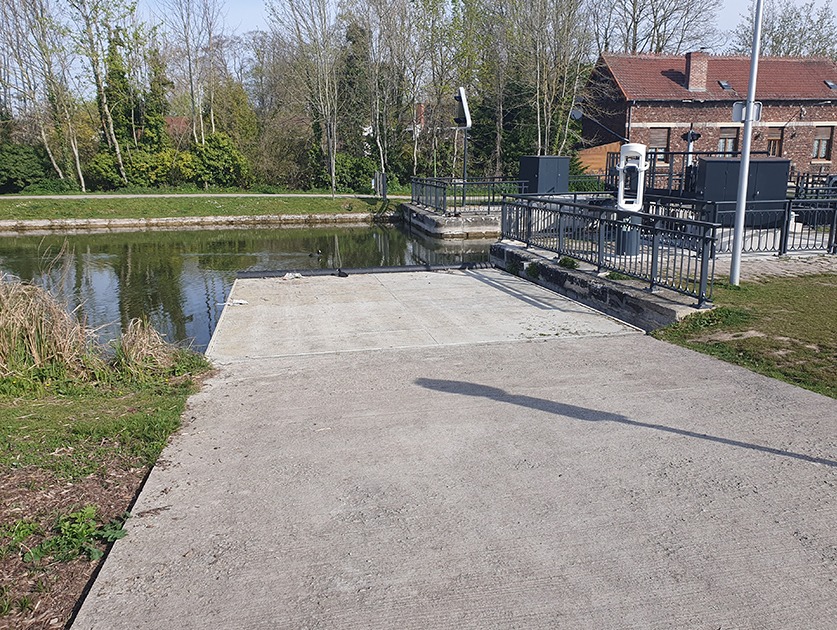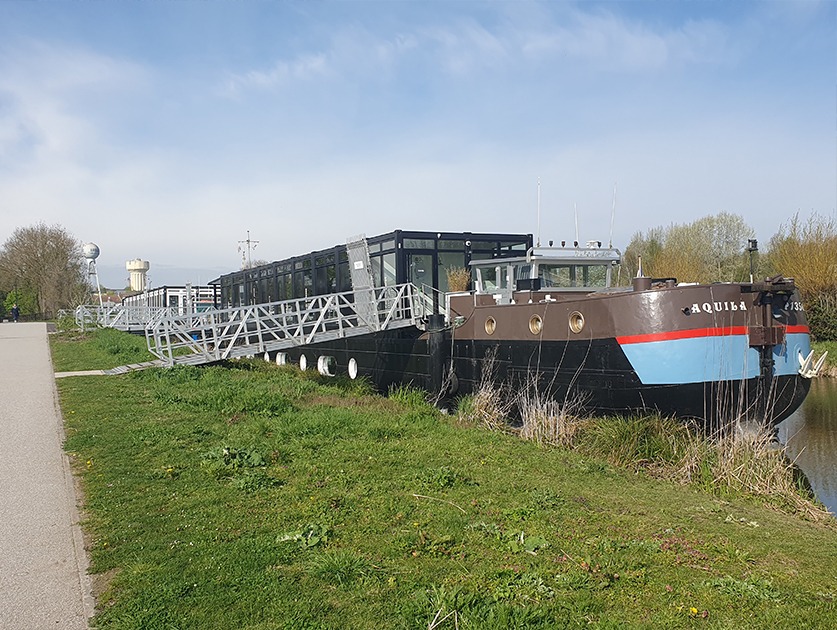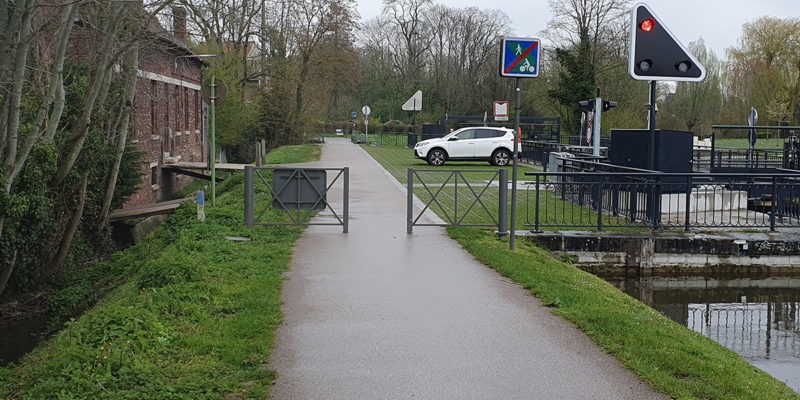The Chemin de Halage, located along the Scarpe canal in Arras, is a peaceful, verdant greenway created by the Communauté Urbaine d’Arras as part of the Trame verte et bleue de l’Arrageois. This urban greenway is much appreciated by residents and visitors alike for relaxing, strolling, cycling or simply enjoying nature.
On the towpath
Stretching along the Scarpe canal, this Voie Verte is a real treat for hiking and cycling enthusiasts. The enchanting rural setting invites you to relax and enjoy physical activity at the same time. The eight-kilometer trail is ideal for families in search of fresh air and for occasional sports enthusiasts. The dolomite floor is suitable for all bikes, but unsuitable for roller skates. Although there is no specific signposting, it is frequently used by pedestrians. Starting from Fampoux, Athies or Saint-Laurent-Blangy, you can reach Arras town center via a charming rural footpath leading to rue Louis Blanc or boulevard Robert Schuman. This path is completely safe and allows you to cross various nature parks along the way. Other trails are currently being planned or developed, such as the one between the Aquarena and the Méaulens dock. It should be emphasized that the development of this route was intended to create an ecological and landscaped corridor to enrich the biodiversity of the Scarpe valley, home to a wide variety of bird species. In short, the Voie Verte is an invitation to relax, do sport and explore the surrounding countryside.

View of the lock near the towpath
The lock: a point of historical and functional interest
Close to the barges along the Chemin de Halage, a lock adds further charm to the peaceful atmosphere along the path. This historic and functional element of the Scarpe Canal offers passers-by the opportunity to observe and learn about the workings of these engineering structures, enabling boats to navigate between canal sections of different levels.
What’s the link with the towpath?
Hauling is a technique used to pull boats or barges along a waterway, usually a canal or river. Originally, this was done by men, horses or oxen walking along a path along the bank, called a towpath. Animals or people pulled the boats using ropes attached to the bow. With the advent of machines and motorization, animal and human towing became obsolete. However, towpaths still exist, and are often redeveloped as walking, hiking or cycling routes for leisure and discovery of the surrounding countryside.
Renovated barges: innovative digital workspaces
In addition to its natural, harmonious setting, the Chemin de Halage is also home to two barges that have been renovated into innovative workspaces. The Flipper and Aquila barges have been transformed into offices and meeting rooms, offering alternatives to traditional workspaces. These barges, located close to Cité Nature, have become popular venues for coworking and digital events. Working from offices set up on a barge can offer an atypical and stimulating work experience. Décima’s barge workspaces often offer modern, pleasant facilities, while offering spectacular views of the water and surrounding area. These barges can be located in urban or rural settings, offering a unique and inspiring working environment. Offices set up on a barge can provide a serene and peaceful working environment, far from the noise and distractions of the metropolis. What’s more, the lifestyle on a barge can be calmer and more relaxed, which can help to reduce stress and stimulate creativity, especially when setting up a business.

Digital barges in Arras
To conclude and get there
The Chemin de Halage, the nearby lock and the barges, which have been renovated as innovative workspaces, make this Arras site a unique place that combines nature, history and innovation. Whether for relaxing, strolling, working or learning, this space offers visitors a rich and varied experience.
How to get there
Go to the Scarpe valley, near the swimming pool and Cité Nature :
R.C.
